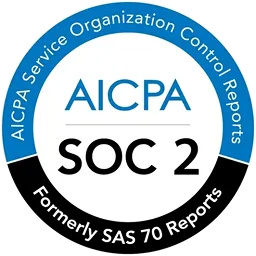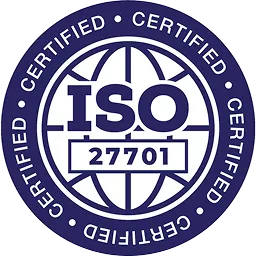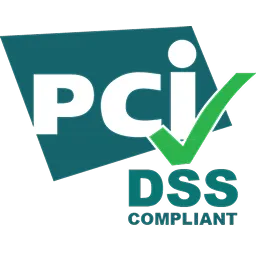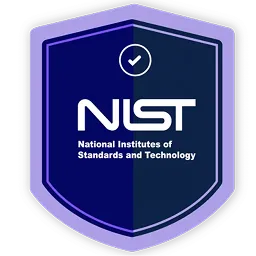Access requests are formal processes where employees/users seek permission to access particular data, apps, or resources. However, manual handling of these requests poses numerous challenges for IT teams and employees. Automating access requests simplifies approvals, ensures consistent security enforcement, and generates audit trails for compliance.
Due to the complexities involved, automating access requests has become increasingly essential. With many employees requesting access to various tools and systems, managing access levels manually has become tedious and error-prone. Ensuring each employee is granted access at the correct level according to their role and responsibilities has become challenging.
Further, maintaining compliance with security policies and regulations adds another layer of complexity to access management processes. Automation solves all the challenges and offers numerous benefits for your organization.
In this blog, we'll delve deeper into these daily challenges and highlight the importance of automating access requests and the benefits you can gain by adopting automation.
Challenges With Manual Access Requests Management

The manual handling of access request management presents several challenges that can impact organizational efficiency and security:
1: Time-Consuming Processes
Manual access requests often involve multiple steps and approvals, leading to delays in granting or modifying access. For instance, employees may need to fill out forms, raise tickets, wait for admins to review and approve, and then wait further for IT teams to implement the changes. This time lag can hinder productivity and agility, especially in fast-paced environments where quick access adjustments are crucial.
2: Increased Risk Of Bottlenecks
Manual access request systems place significant reliance on particular individuals or teams to handle processing, approvals, and verification. This dependency presents numerous challenges. When these designated individuals are unavailable or overwhelmed, it can result in bottlenecks and delays in request processing. This issue becomes particularly troublesome during busy periods or when key approvers are absent due to factors like vacations, illness, or other reasons.
3: Increased Risk Of Security Errors
Human error is more likely in manual processes, such as entering incorrect information or overlooking critical details in access requests. These errors can result in granting unauthorized access, leaving systems vulnerable to breaches or compliance violations. Moreover, the complexity of managing access permissions manually across various systems and applications amplifies the risk of inconsistencies and misconfigurations.
4: Lack Of Visibility & Accountability
Manual access request systems often lack transparency and real-time tracking capabilities. Maintaining a comprehensive view of who has access to what resources at any given time is challenging. This lack of visibility makes enforcing security policies effectively or responding promptly to access-related incidents difficult. Additionally, without clear accountability mechanisms, it's hard to attribute access issues or breaches to specific individuals or actions.
Thus, the challenges associated with manual access requests can lead to inefficiencies, security vulnerabilities, and compliance risks within an organization. Addressing these challenges requires transitioning to automated access request systems. These systems streamline processes, enhance accuracy, improve visibility, and strengthen overall access management practices.
Why Is It Important To Automate Access Requests?

With the rapid evolution of digital technologies and the growing complexity of access management, manual processes for handling access requests are no longer sufficient. Let’s delve into the critical reasons why automating access requests has become a priority for businesses across various industries.
1: Enhances User Experience
In traditional settings, accessing data or resources often involves cumbersome methods like emails, phone calls, or ticketing systems. However, modern identity management solutions offer self-service access requests that enhance security and compliance. These tools ensure consistent enforcement and tracking of digital identities throughout the IT ecosystem.
Modern tools streamline services by incorporating online request processes and approval workflows. Intelligent access analytics further optimize efficiency by suggesting appropriate access levels and flagging risky requests. This accelerates approval processes based on recommendations, reducing approval times. Overall, an intuitive automated approach lessens the workload for both requesters and approvers, ultimately boosting employee experience and productivity.
2: Mitigates Risk Of Human Errors
Handling a large number of access requests manually in a fast-paced environment can lead to human errors. This often occurs when requesters submit access requests for permissions beyond what they actually need, resulting in privilege creep over time.
Moreover, excessive access requests can violate the principle of least privilege. IT managers and admins may approve these requests without thorough scrutiny to avoid appearing obstructive or because they are unfamiliar with detailed access controls. Lack of access tracking and failure to limit access duration are additional risks associated with human errors.
Not only are approval processes susceptible to human error, but service of access requests can also be impacted. A simple typo or incorrect group selection can result in insufficient access, excessive access, or incorrect group memberships, potentially leading to security breaches or data privacy violations.
Automating access requests and fulfillment helps reduce the risk of human error by flagging unnecessary or excessive access for both requesters and approvers. This automation eliminates typographical errors and ensures accurate group selections, promoting better security practices and adherence to the principle of least privilege.
3: Ensures Comprehensive Audit Trails
An audit trail consists of electronic records or logs that detail events, including who participated, the actions taken, the location of the events, and their time and date. These trails are essential for regulatory compliance, demonstrating that only authorized individuals accessed sensitive data or restricted resources at any given time.
Additionally, audit trails play a vital role in identifying and investigating security incidents, unauthorized access attempts, or compliance breaches. However, manually compiling access request logs and tracking digital identities for audits can be very laborious.
Automated logging of access requests ensures accurate documentation of audit trails for regulatory compliance. These audit trails demonstrate that only authorized individuals had access to sensitive data or restricted resources at any given time. Further, they enable timely corrective actions and enhance overall cybersecurity posture.
4: Boosts IT Team’s Efficiency
Automating the approval and fulfillment of access requests relieves IT teams from manual tasks, freeing up valuable time and resources for more strategic initiatives. This automation accelerates the approval process while maintaining control through automated measures such as automatic review dates or access expiration dates. For example, access requests can be automatically reviewed or set with expiration dates, ensuring ongoing security and policy adherence without constant manual oversight.
By reducing manual intervention and introducing automated controls, IT departments can ensure compliance, enhance security, and focus on delivering high-impact projects. This streamlined approach optimizes productivity and promotes proactive security practices. Moreover, it enables IT teams to add greater value to the organization's goals and objectives.
5: Simplifies Compliance Processes
Automating access request logging and audit trail documentation provides admins with a centralized and precise evidence repository, simplifying regulatory compliance efforts. This centralized location ensures easy access to audit trail records, making demonstrating adherence to security, compliance, and privacy regulations effortless.
This level of accountability helps organizations adhere to regulations like PCI-DSS, HIPAA, SOX, GLBA, or GDPR, ensuring data security, privacy, and integrity.
Furthermore, automated report generation capabilities enable swift verification and validation of access permissions, ensuring that data and resource access align with established policies and regulatory requirements. This streamlined approach improves compliance management and enhances data security and regulatory transparency, instilling confidence in stakeholders and regulatory bodies.
Now that you understand the significance of automating access requests let's explore some key factors to consider before proceeding.
Key Criteria To Consider While Automating Access Requests

Here's a brief explanation of each key criterion for automating access requests:
1: Self-Service Portals
Self-service portals empower users to request access to resources or applications independently without relying on manual intervention from IT or administrative staff. These portals are user-friendly and typically include a simple interface where users can select the resources they need, specify the required access level, and submit their requests. Self-service portals streamline the access request process, reduce dependency on support teams, and improve overall efficiency by enabling quick and direct access provisioning.
2: Role-Based Access Controls (RBAC)
Role-based access controls are essential for ensuring that users only have access to the resources and functionalities necessary for their roles and responsibilities within the organization. RBAC systems categorize users into roles based on their job functions, and access permissions are assigned to these roles. For example, an employee in the finance department may have access to financial data and systems relevant to their role, while someone in human resources may have access to employee databases. RBAC helps enforce security policies, minimize the risk of unauthorized access, and simplify access management by aligning permissions with job requirements.
3: Access Request Workflow Automation
Workflow automation involves streamlining and standardizing the access request process through predefined workflows and automated actions. When a user submits an access request through the self-service portal, the automation system initiates a workflow that includes steps such as request validation, approval routing, access provisioning, and notification to the user. Workflow automation reduces manual intervention, ensures consistency in the access request process, accelerates response times, and provides transparency by tracking the status of requests at each stage.
4: Seamless Integration with Existing Systems
Effective automation of access requests requires seamless integration with existing IT systems, such as identity and access management (IAM), directory services, user databases, and application repositories. Integration ensures that the automation system can access relevant user data, roles, permissions, and access policies from these systems.
It also enables automated synchronization of user information, updates, and access changes across multiple systems, maintaining data integrity and reducing administrative overhead. Seamless integration facilitates smooth communication between the access automation system and other IT infrastructure components, ensuring a cohesive and efficient access management ecosystem.
Organizations can enhance security, streamline processes, improve user experience, and effectively manage access permissions across their IT environment by considering these key criteria when automating access requests.
4 Best Practices for Automating Access Requests
Here are 4 key strategies for effectively automating access requests. These strategies empower organizations to improve efficiency and compliance while reducing administrative burden.

1: Conduct a Thorough Requirements Analysis
Begin by thoroughly assessing your organization's access management needs, including user roles, access levels, approval workflows, and compliance requirements. Identify key stakeholders such as IT, security, and department heads to ensure comprehensive analysis. Collaborate with these stakeholders to gather input on specific access requirements, potential challenges, and desired outcomes.
2: Select Appropriate Access Request Management Tool
Choose an access request management tool that aligns with your requirements identified during the analysis phase. Consider factors such as scalability to accommodate future growth and integration capabilities with existing systems (such as IAM solutions). Also, look for security features like role-based access controls, encryption, vendor support, and updates and maintenance. Evaluate multiple options through demonstrations, trials, and vendor consultations to make an informed decision.

Zluri offers a robust access request management solution that helps IT teams reduce manual workloads and ensure timely access to resources. This innovative tool helps you tackle key challenges, including delays in granting access, overburdened teams, and deprioritization of critical service requests. As per, Kuppingercole's research and analysis report, with Zluri, organizations can establish multi-step approval workflows, receive notifications directly through Slack, and seamlessly auto-provision access to specified apps, streamlining the access request process.
Zluri's Key Features in Automated Access Request Management:
- Employee App Catalog: Zluri simplifies app requisition with an intuitive Employee App Catalog resembling popular consumer app stores. Employees can quickly search and request access to necessary applications, enhancing productivity and role effectiveness.
- Streamlined and Customizable Approval Process: It offers a streamlined approval process that replaces ticket-based approvals. This allows approvers to make quick decisions to prevent SLA breaches and enhance operational efficiency. Additionally, It offers customized approval policies to match unique organizational requirements and compliance standards, ensuring seamless workflow alignment for various access request types.
- Seamless Integration with Slack: Integrate with Slack to automatically notify approvers of pending requests, facilitating timely review and decision-making for enhanced productivity and response times.
- Override Stalled Requests: Further, Zluri empowers IT admins to override stalled requests, ensuring uninterrupted access provisioning and preventing delays caused by bottlenecks or unforeseen circumstances.Want to learn more? Schedule a personalized demo and discover firsthand how Zluri optimizes access request management for greater efficiency.
3: Ensure User Training & Open Communication
Provide comprehensive training sessions tailored to different user groups, including end-users who will submit access requests and administrators who will manage approvals and configurations. Training should cover navigating the access request system, submitting requests, approving/rejecting requests, managing user roles, and handling access-related issues.
Develop training materials such as guides, tutorials, and FAQs to support ongoing learning and reference. Implement change management strategies such as communication plans, feedback mechanisms, and support channels to address user concerns and promote adoption.
4: Continuously Monitor, Analyze, & Implement Updates
Establish regular monitoring practices to track key metrics related to the automated access request system's performance, such as request volume, processing times, approval rates, and compliance metrics. Utilize analytics and reporting tools to generate actionable insights and identify areas for improvement.
Conduct periodic reviews and audits to ensure adherence to security policies, regulatory requirements, and internal controls. Stay informed about industry trends, security threats, and technology advancements to proactively implement updates, enhancements, and security patches. Collaborate with IT teams, vendors, and stakeholders to prioritize and schedule updates effectively while minimizing disruptions to operations.
Automation: The Path to Succesful Access Request Management
In conclusion, automating access requests is extremely critical for modern organizations. It offers crucial benefits like improved efficiency and speed, enhanced accuracy and reduced errors, better visibility and tracking, strengthened security measures, and cost savings. These advantages optimize resource utilization and contribute to a more agile and resilient organizational structure.
By leveraging self-service portals, access request workflows, and seamless integration with existing systems, you can streamline access management processes, reduce errors, enhance security, and improve overall operational effectiveness.
By investing in automated access request systems, you can stay ahead of evolving security threats, ensure regulatory compliance, and empower employees with seamless and secure access to the resources they need.
It's time for organizations to prioritize automation as a strategic imperative, aligning access management practices with the dynamic demands of the digital age. Let automation be the cornerstone of your access management strategy, driving efficiency, security, and success.
Frequently Asked Questions (FAQs)
1: How do access requests typically work?
Access requests are often submitted through an online self-service portal or a designated access request system. Requesters specify the resources they need access to and the level of access required, and provide justification for their request.
2: How does automated access request management improve security?
Automated access request management enhances security by enforcing consistent access controls, ensuring access permissions align with users' roles and responsibilities. It also enables real-time monitoring and auditing of access activities, facilitating timely detection and response to potential security threats or data breaches.
3: Who approves access requests?
Access requests are typically approved by designated approvers within the organization, such as department heads, managers, or IT administrators. Approval processes may vary based on the organization's policies and the type of access being requested.
4: Can automated access request management systems integrate with existing IT infrastructure?
Yes, automated access request management systems are designed to seamlessly integrate with existing IT infrastructure, including identity and access management (IAM) solutions, directory services, and application repositories. This integration ensures access requests are processed efficiently, access permissions are synchronized across systems, and audit trails are maintained consistently.







.png)

.svg)














